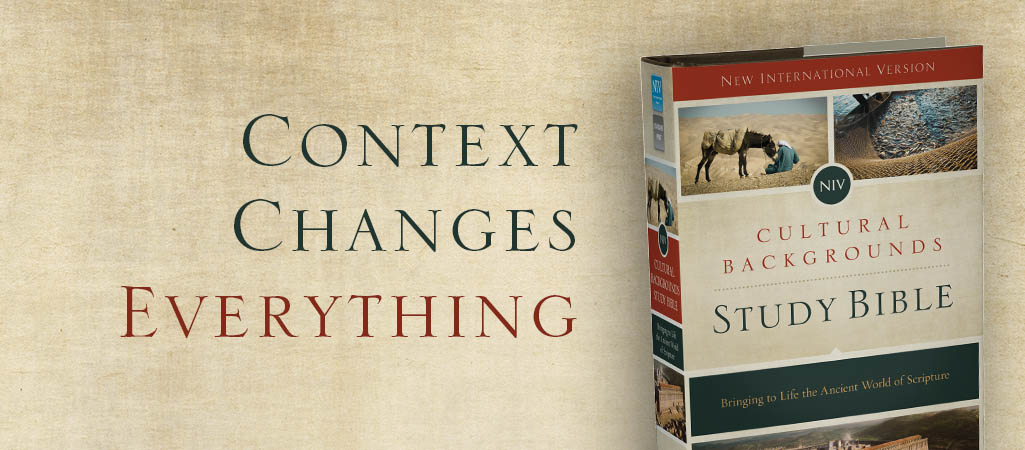Today’s book is the NIV Cultural Backgrounds Bible. (Yes, I’m in Peru. I wrote this before I left and scheduled it for the blog tour.) Zondervan provided a copy for me to to review.
Before we get too far, let me lay down some realities on this review. I have not read all of the study notes in this Bible. I have focused on one book of the Bible, Ephesians. I am also not going to deal with the pros and cons of the New International Version. There’s enough on that in both pop-level blogging, academia, and the pastoral world.
Enough of that. On to Ephesians!
First, the concept for the Cultural Backgrounds Bible: while most study Bibles look somewhat at the direct cultural background of the text, this one spreads that effort. The goal is to provide readers with not only the Israelite or early Christian direct context, but to look at the cultures which surrounded the events in Scripture. This provides a better understanding of why some stories are explained the way they are. For more information, check out the official page, here.
Second, in setting up the blog tour, I volunteered to take a long look at Ephesians. The notes for this area come from Dr. Craig Keener. I’m familiar with some of his other works, and have found them helpful. I don’t agree with all of his conclusions, but there are few people that would be true of, anyway.
The Ephesians section begins, as expected, with a look at authorship of the book of Ephesians. Keener deals briefly with authorship and highlights a few reasons why he accepts Pauline authorship. I found his assertion that Ephesians was intended as a circular letter.
Keener also notes several reasons to take Ephesians as a later letter rather than an early one.
The notes then provide a full-color rendering of Ephesus. This, along with several paragraphs on Ephesus, provides the reader with a better understanding of the city home of the church Paul writes to.
The study notes attached to the text interface with the Old Testament texts Paul alludes to, but also draw out Greco-Roman context. The note on Ephesians 1:8, for example, notes the similarities in how Biblical writers and Greek rhetoricians used repetition for emphasis.
2:2’s note draws a connection into the Dead Sea Scrolls and the section of Judaism involved with producing those scrolls. This type of note is the highlight of this Bible: it draws out not only the well-known background but also some of the lesser-known areas in the background. This is also shown in the discussion of the idea of “peace” further down in the chapter.
As a preacher who chases rabbits (some of the time), I found Keener’s observation about digressions in the Ephesians 3 section noteworthy. If Paul could chase rabbits, then so can I…of course, mine aren’t as tasty.
The notes on 5:18 draw out the cultural reasons Paul addresses drunkenness. He develops what drunkenness looked like in antiquity.
There is an extended explanation of the idea of household codes from Ephesians 5:21-6:9. Keener points out how Paul’s views, while currently thought of as stiff and harsh, would have been among the more moderate of the era. The notes then go on to work through the grammar and challenges found in the household codes. Keener does not attempt to negate the commands, but also does not put direct modern applications to them. Instead, he leaves them explained in context and leaves the reader to bring them forward to today.
In all, I’ve found the study aids in the NIV Cultural Backgrounds Bible helpful. I’m not sure I really need another study Bible on the shelf, but definitely look forward to adding these notes to my digital study platforms.



No comments:
Post a Comment
To deal with SPAM comments, all comments are moderated. I'm typically willing to post contrary views...but I also only check the list once a day, so if you posted within the last 24 hours, I may not be to it yet.